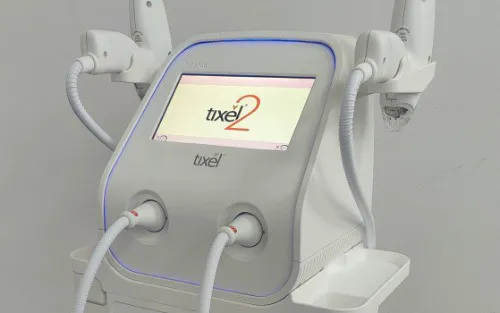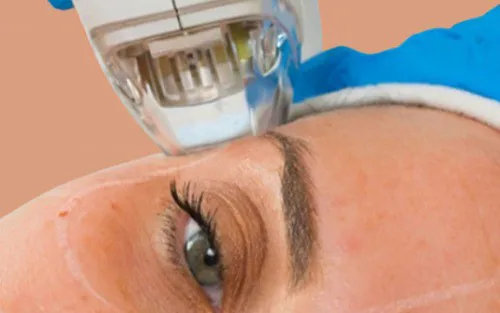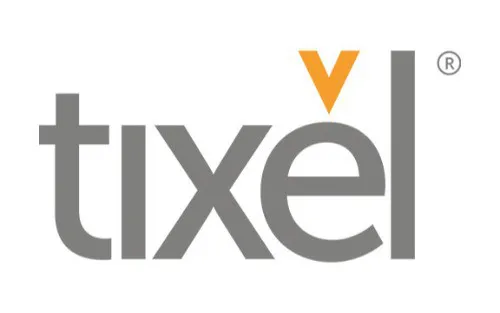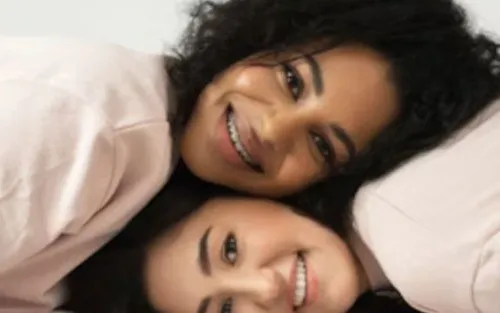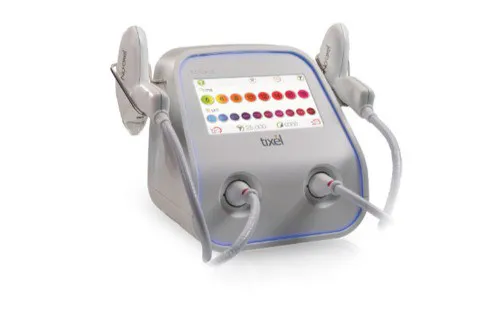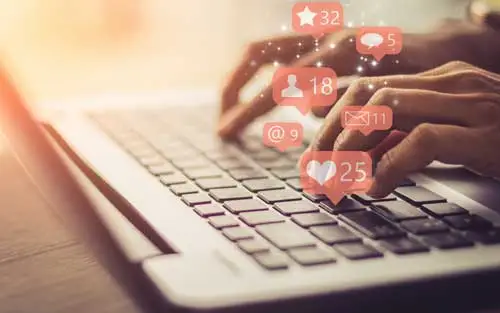Tixel vs. Traditional Laser
- No ablative damage – safer for darker skin tones and sensitive areas.
- Less downtime – recover in days instead of weeks.
- Pain-free option – minimal discomfort compared to CO2 laser.
- No smoke, no bleeding – makes the procedure clinic-friendly and safer.
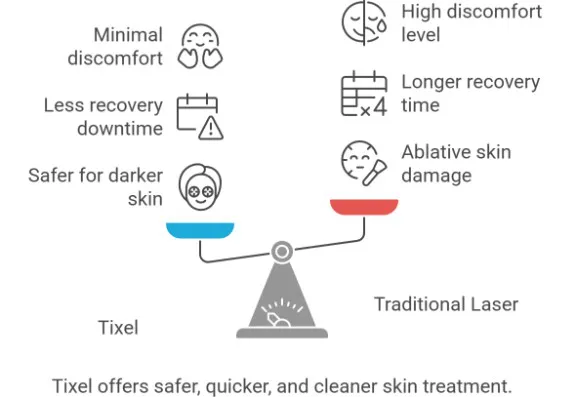
How Does Tixel Work?
- Uses Thermo-Mechanical Action (TMA®) to transfer controlled heat to the skin.
- Creates microthermal zones without burning or breaking the skin barrier.
- Stimulates collagen production and enhances skin renewal with minimal trauma.
- A needle-free, light-free, and radiation-free alternative to laser treatments.
What Does Tixel Treat?
Wrinkle Reduction And Skin Tightening
- Stimulates fibroblast activity for long-term collagen production.
- Targets fine lines, crow’s feet, and forehead wrinkles.
- Improves skin elasticity without invasive procedures.
Acne Scars And Stretch Marks – Can Tixel Help?
- Breaks down scar tissue and promotes new skin formation.
- Effective for post-acne scarring, box scars, and rolling scars.
- Reduces stretch mark visibility on the abdomen, thighs, and arms.
Hyperpigmentation And Skin Tone Improvement
- Treats sun damage, melasma, and uneven skin texture.
- Safe for Fitzpatrick skin types I–V, reducing the risk of post-inflammatory hyperpigmentation (PIH).
Works well in combination with brightening serums for enhanced results.
The Tixel Treatment Process – What to Expect
Pre-Treatment: How to Prepare for Tixel
- Avoid excessive sun exposure for at least 2 weeks before treatment.
- Stop using active skincare ingredients like retinoids 5-7 days prior.
- Hydrate your skin and ensure it’s in optimal condition for healing.
What Happens During a Tixel Session?
- The Tixel tip makes controlled contact with the skin, delivering thermal energy.
- A full-face session typically lasts 15–30 minutes.
- Minimal discomfort, often described as a mild warm sensation.
Post-Treatment Care And Recovery Timeline
- Expect mild redness and swelling for 24–48 hours.
- Skin will develop a ‘bronzed’ microcrusting effect that naturally flakes off.
- No need for occlusive creams – simple moisturisation is enough.
- Full skin renewal visible in 3-4 weeks with continuous improvement over time.
How Many Tixel Treatments Do You Need (and When)?
Let’s talk numbers. Because when it comes to Tixel, one session is a glow-up… but a series is a skin transformation.
The Magic Number: 3 to 5 Sessions
Most people start seeing noticeable changes after just one treatment — smoother skin, tighter pores, and that oh-so-subtle glow. But for the best, long-lasting results? You’re looking at a course of 3 to 5 sessions, depending on your skin goals and starting point.
Think of it like going to the gym — one workout helps, but consistent training gets you the dream body. Tixel works the same way, only your skin does the heavy lifting (hello, collagen).
Spacing It Right: Every 4 to 6 Weeks
To give your skin time to repair, rebuild, and regenerate collagen, Tixel sessions should be spaced about 4 to 6 weeks apart. This sweet spot allows your complexion to calm, renew, and show off the previous session’s progress before the next.
Maintenance Sessions: Your Skin’s New Best Habit
Once you’ve completed your initial treatment series, maintenance is key. Depending on your age, skin type, and lifestyle, plan for a top-up session every 4 to 6 months. It’s the smart way to keep collagen levels up and ageing signs down — like pressing pause on the clock without needles or drama.
How Much Does Tixel Cost?
Average Cost Per Session
- Prices range from £250–£800 per session, depending on location and provider.
- Package deals for multiple sessions often provide savings.
- Custom pricing for small areas (e.g., periorbital, scars) may be available.
Factors Affecting Cost
- Clinic reputation – high-end aesthetic clinics may charge more.
- Practitioner expertise – experienced dermatologists may price higher than beauty clinics.
- Treatment area – larger areas like the face + neck cost more than targeted treatments.
- Additional enhancements – combining with PRP, mesotherapy, or peels may increase cost.
Are There Any Side Effects With Tixel?
Common And Temporary Reactions
- Mild redness and swelling that subsides within 24–48 hours.
- A sandpaper-like texture for a few days as skin regenerates.
- Tiny, bronzed microdots that naturally flake off over a week.
Potential Risks And How to Avoid Them
- Hyperpigmentation (PIH) risk if sun exposure isn't minimised post-treatment.
- Over-treatment sensitivity if parameters are too high for skin type.
- Rare blistering in very sensitive individuals – preventable with correct settings.
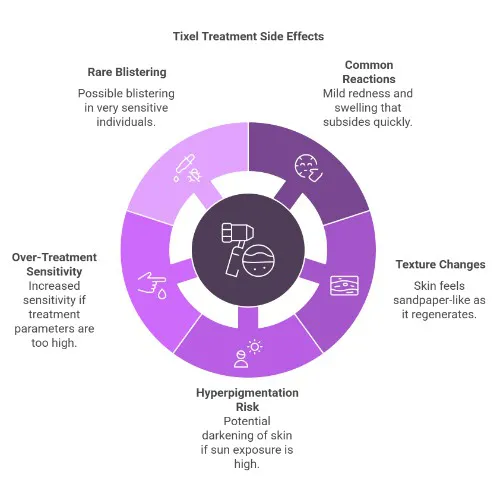
Who Should You Trust to Do Your Treatment?
Finding a Qualified Practitioner
- Look for board-certified dermatologists, aesthetic doctors, or trained specialists.
- Verify experience with Tixel – ask for before-and-after photos of previous patients.
- Choose a clinic with certified Tixel devices and sterile protocols.
Questions to Ask Before Booking
- How many Tixel treatments have you performed?
- What settings will you use based on my skin type?
- What aftercare will I need?
- What’s the worst reaction you’ve seen, and how was it managed?
Red Flags to Avoid
- Practitioners who rush consultations or fail to explain the procedure.
- Clinics offering extremely low prices – may use unqualified staff.
- Lack of patient reviews or unclear safety measures.
Tixel vs Other Skin Resurfacing Treatments
Tixel vs. CO2 Laser – Which is Better?
- Tixel: Lower pain, faster recovery, no risk of burns.
- CO2 Laser: More aggressive but effective for deeper wrinkles.
- Tixel: Safer for darker skin types, no downtime required.
Tixel vs. Microneedling – Key Differences
- Tixel: Uses heat energy, while microneedling creates mechanical micro-injuries.
- Microneedling: Involves needles, potential bleeding, and longer healing time.
- Tixel: No skin penetration, making it more hygienic and lower risk.
Tixel vs. RF Microneedling – Which One is Right for You?
- Tixel: Non-invasive with thermal energy.
- RF Microneedling: Uses needles + radiofrequency for deeper tissue tightening.
RF Microneedling: Better for sagging skin, while Tixel excels in resurfacing.
